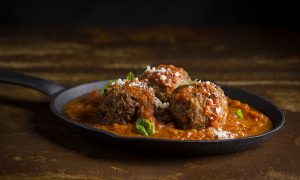ABOUT IBS AND THE LOW FODMAP DIET: If you are one of the 15-20% of the population with IBS (Irritable Bowel Syndrome) and you haven’t heard of the low FODMAP diet, you are certainly not alone. The following content will explain what the Low FODMAP Diet is and how it can be helpful for those with digestive issues.
What are FODMAPS?
FODMAP stands for: Fermentable Oligo-, Di-, Mono-saccharides And Polyols.
FODMAPs are essentially a bunch of short-chain carbohydrates that are poorly absorbed in the small intestine and pass into the large intestines where there are fermented by the bacteria that live there. They may also pull water into the large intestine. Both of these actions may cause symptoms such as abdominal pain, gas, bloating, diarrhea and/or constipation.
THE FODMAP “ELIMINATION”
The list of permitted foods is very specific. While certain foods will be easily identifiable, for others you will need to consult with a list to get started. You’ll typically begin with a strict “elimination” diet that usually lasts between 2 and 6 weeks.
If you are feeling relief during the elimination phase, you can add back certain foods, with one of the FODMAP groups at a time, in small amounts, to see what you are most sensitive to. It’s recommend to do this methodically and also with a registered dietitian. There is a good chance that after the challenge you may be able to add back and tolerate a certain amount of a food you are sensitive to in a given day, or at a particular meal, but this will vary with individuals. I will go through the dietary carbohydrates and some of the foods that contain them, but definitely consult with a complete list from a reliable source.
“FODMAPS 101”
Fructose: a natural fruit sugar found in many fruits, honey, high-fructose corn syrup and agave can be a problem either due to the lack of an enzyme in the body or the ratio of glucose to fructose in a fruit. Fruits with a high glucose: fructose ratio are generally well tolerated, such as blueberries, strawberries, cantaloupe, honeydew and ripe bananas, but those with a high fructose: glucose ratio such as apples, watermelon and mangoes may not be.
Lactose: a carbohydrate found in dairy products can be a problem due to a partial or complete lack of the enzyme lactase which digests lactose. Foods such as cow’s milk, yogurt and ice cream are lactose containing foods.
Fructans: are carbohydrates that are completely malabsorbed because the intestine lacks an enzyme to break their fructose bond. Wheat accounts for most of people’s fructan intake, which can be found in breads, cereals, and pasta, but they can also be present in onions, garlic and other vegetables. This is not to be confused with Celiac Disease, or a gluten sensitivity which is related to the wheat protein, gluten.
Galactans: are carbohydrates that are also malabsorbed because the intestine does not have the enzyme to break them down. Beans, peas, and lentils are primary examples.
Polyols: also known as sugar alcohols, are found naturally in some fruits and vegetables and also added to sugar-free gum, mints, and cough drops. The names of some of these artificial sweeteners end in ol- like sorbitol, xylitol, mannitol, and malitol. Apples, pears, stone-fruits, mushrooms, and cauliflower would also be high sources of polyols.
GETTING STARTED
It may seem like a lot of foods will be “off limits.” But keep in mind this is only during the elimination phase and hopefully you will be able to add back some of your favorite foods, or other versions of them.
More importantly, we are here to help you! Epicured’s Michelin-star chefs and registered dietitians have developed wonderful low FODMAP, digestion-friendly recipes for all of your favorites, like:
Pad Thai,
Tikka Masala, even
Mac & Cheese! Our
entire menu is even permitted during the elimination phase!



